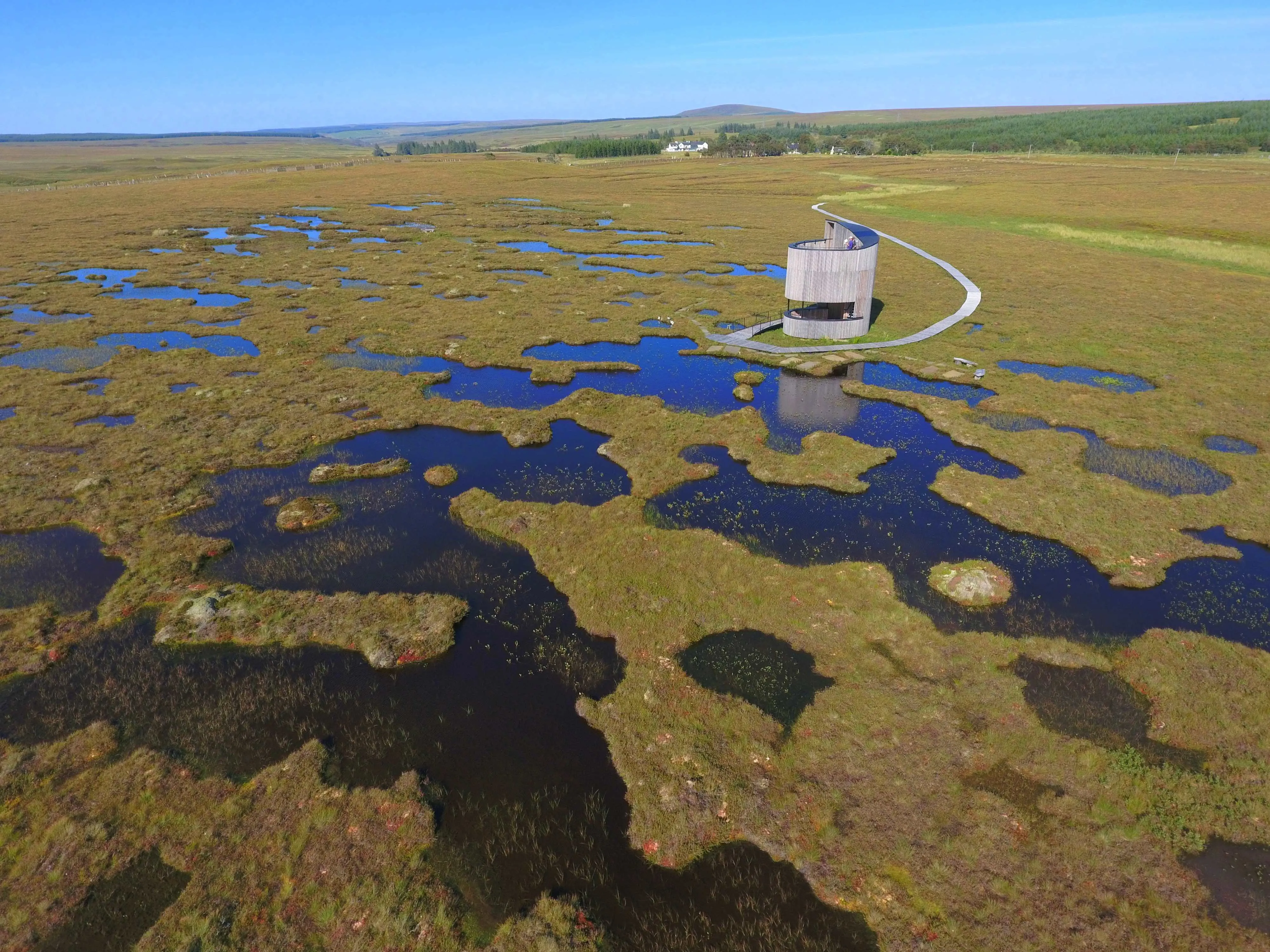The Flow Country: an inspiring restoration success story
Located in the far north of Scotland, the Flow Country is one of the most important places for wildlife in the world, but not long ago it faced near total destruction. Thanks to the efforts of the RSPB and other organisations, it is now thriving once again. This is the Flow Country’s incredible story.

On this page
What is the Flow Country?
The Flow Country is the common name for the vast peatlands of Caithness and Sutherland – mainland Scotland’s most northern counties. This amazing place is home to the largest blanket bog in the world, covering over 400,000 hectares (1,500 square miles) – three times the size of the Shetland Islands.
Peat has been forming here for thousands of years and it stores millions of tonnes of carbon. But it’s not just peat that flourishes in the Flow Country – the area is also a stronghold for wildlife. Hen Harriers hunt over the bogs, wading birds like Golden Plovers and Dunlins come here to raise their chicks, and insect-eating sundew plants stud the ground. Waterbirds like Common Scoters and Red-throated Divers call this place home too, breeding out on the peatland pools.
A landscape changed beyond recognition
For thousands of years, the Flow Country was left virtually unspoilt. Throughout this time the peatlands remained largely free of trees, but in the 1980s, all that changed.
In the space of just a few years, huge areas of blanket bog were drained, planted with trees, criss-crossed with roads and enclosed by deer fences. This destroyed the special nature of these vast open peatlands and threatened the very existence of one of the UK’s most important areas for wildlife and carbon storage.
A campaign for peatland conservation
Together with the Nature Conservancy Council and other organisations, we mounted a campaign to halt this destructive planting and called for the best remaining areas of peatland to be protected.
The government eventually agreed to stop the planting and in January 1988 Malcolm Rifkind (the then Secretary of State for Scotland) announced that half of the peatlands would be protected as Sites of Special Scientific Interest. This ultimately led to the protection of over 140,000 ha of open habitat, mostly made up of blanket bog.
Later that same year, the then Chancellor Nigel Lawson brought an end to the forestry grants and tax breaks that were being used to support and drive what would otherwise have been unprofitable planting.
The end of planting was certainly welcome, but by then, a huge area of what we now know to be globally important blanket bog was destroyed, leading to the loss of some of our most special wildlife. It’s estimated that over 900 pairs of Golden Plovers, almost 800 pairs of Dunlins and 130 pairs of Greenshanks were lost by the time planting was halted.
A new beginning: peatland restoration project
With inappropriate tree planting relegated to the history books, a new era of restoration could begin.
In 1994, we acquired the Forsinard Estate in the heart of the Flow Country, thanks to a major contribution from RSPB members and supporters. Since then, the nature reserve at Forsinard Flows has expanded and it’s now the single largest area of land we manage in the whole of the UK.
Following initial work to trial different restoration methods (funded by two major EU Life Nature grants), we’re now working in partnership to remove some of the worst areas of woodland and to restore the underlying peat back to functioning blanket bog. This is pioneering work on an epic scale. Long-lost open vistas are now reappearing, and peatland birds are returning to their former haunts. We’re constantly monitoring the response of the areas under restoration, and Forsinard is now a centre for research to help us better understand the importance of healthy peatlands in combatting the nature and climate emergency.
A place for people, as well as nature
The peatlands of the Flow Country are tough places to work in – they can be cold, are often wet, and the harsh conditions can be unforgiving. Convincing people – especially policy makers – that they are worthy of protection and investment hasn’t always been easy. That’s why we’ve sought to bring people closer to the peatlands, so that they can experience at first hand the magical sounds, colours and scale of these amazing places, which stretch for miles across the northern tip of Scotland.
The Lookout Tower at our Forsinard Flows reserve is a real draw for visitors, offering a new perspective on the landscape, and now, thanks to investment in the creation of research facilities and accommodation, we’re able to welcome scientists and volunteers who come from all around to study and help restore the bogs.

The Flow Country is now a World Heritage Site
In recognition of its outstanding importance, UNESCO announced in July 2024 that the Flow Country, including the land we manage at RSPB Forsinard Flows, would join the Great Barrier Reef and the Grand Canyon as a recognised World Heritage Site. This is yet another major step in the efforts to protect and restore these peatlands, for nature, people and the climate.
The announcement was so significant that His Majesty King Charles III visited Forsinard to unveil a plaque to commemorate the Flow Country’s new status. You can watch the celebration in our video, featuring RSPB staff and some of the partners we have worked with to restore this special place.


